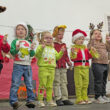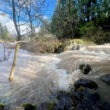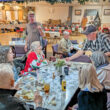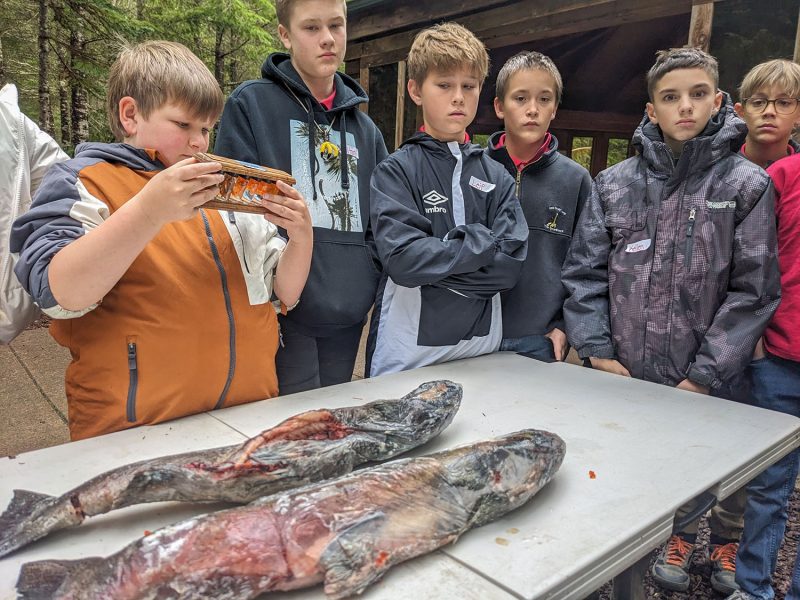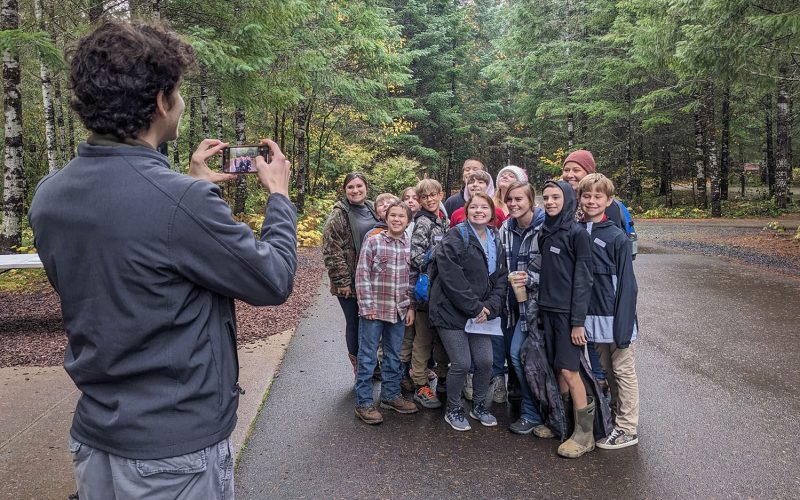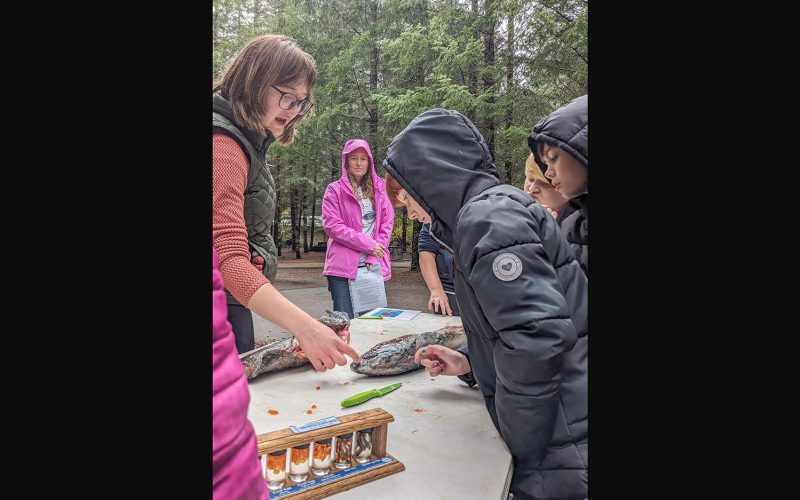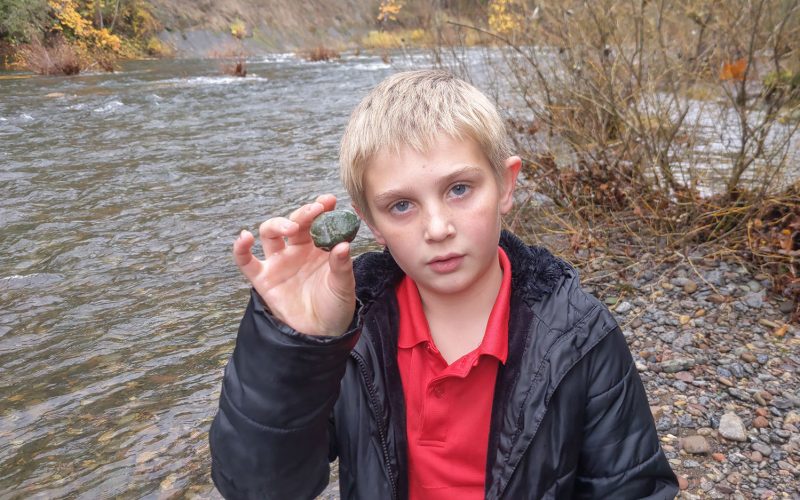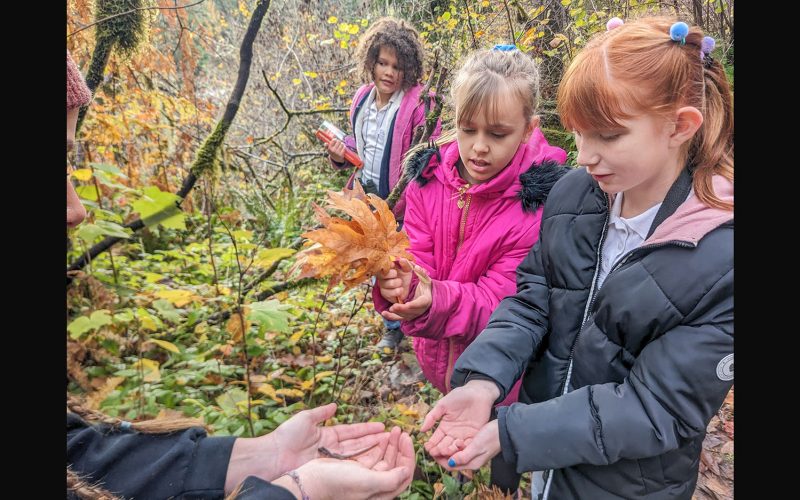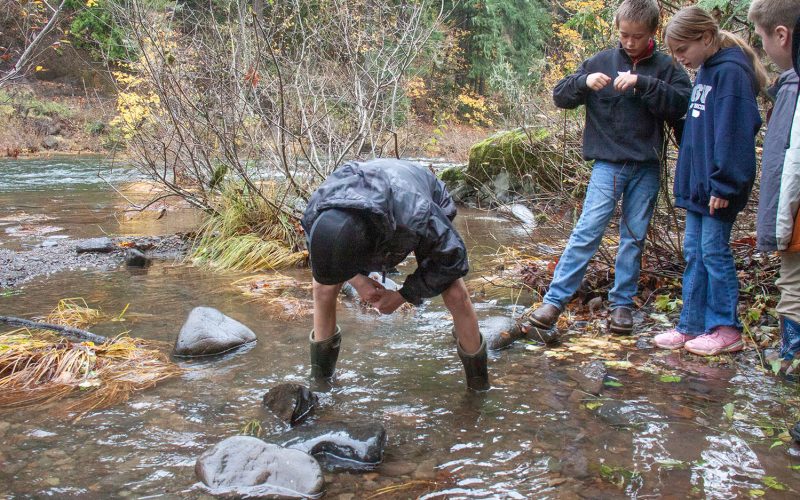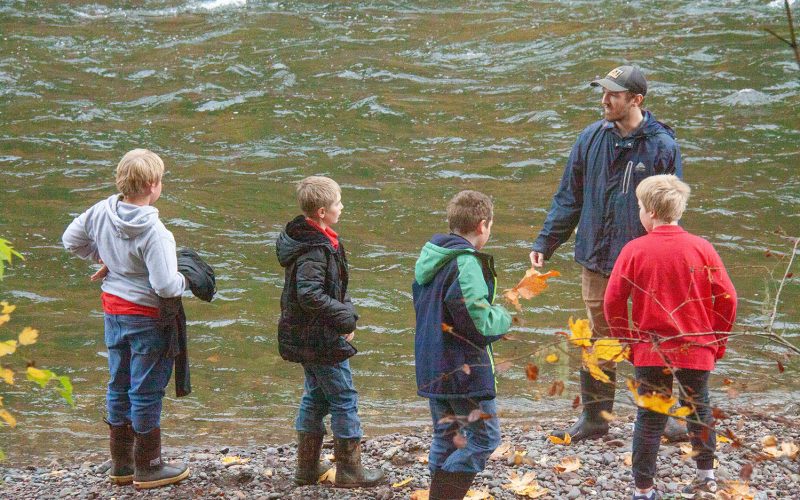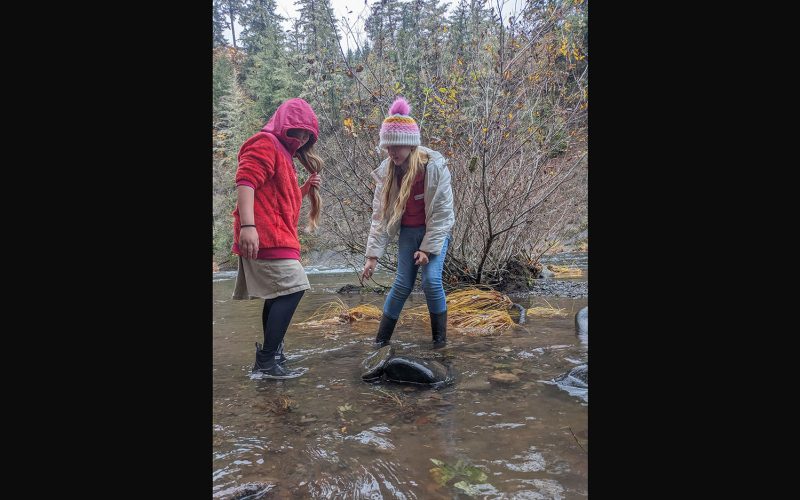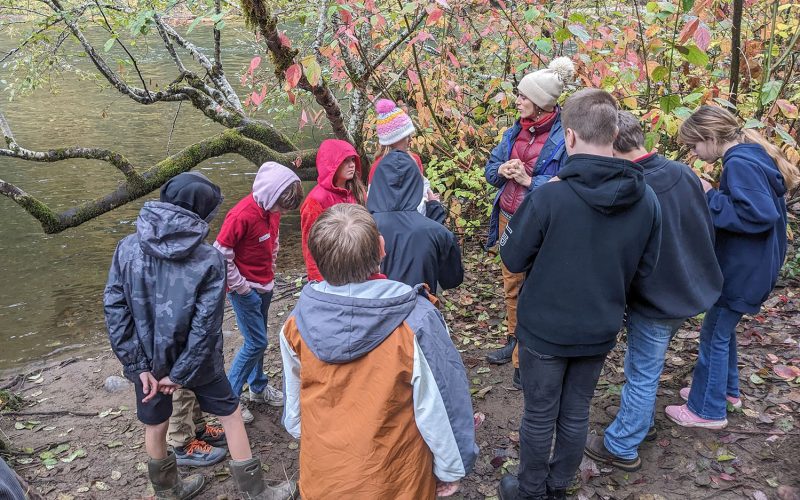Fifth and sixth graders from Sweet Home Charter School took to the river on Tuesday, Nov. 5, for an outdoor classroom experience which involved poking at fish, searching for water bugs and observing the habitat surrounding them.
The day-long field trip, “Salmon Watch,” is organized every year by the South Santiam Watershed Council.
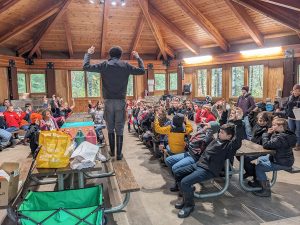
“We are here to learn about salmon ecology; life cycle, ecosystems, (and) how it’s related to humans,” explained Watershed Education Coordinator Alex Shoulders. “Our philosophy is that people will feel invested in the environment when they have good experiences in the environment.”
The program originated through the World Salmon Council, but SSWC adapted the curriculum to better meet the needs for Sweet Home children, he said.
“A lot of the changes we have made is getting rid of the information-dense curriculum, and replacing it more with exploration and critical thinking focused activities, which has been really nice,” he said. “I think it’s provided students a lot more time to get hands-on experiences working with the macros, touching the salmon.”
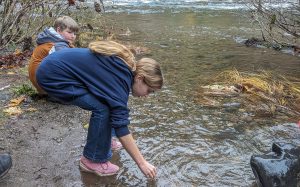
Shoulders would like to evolve SSWC’s programs into a more community-centered approach that gives students a chance to meet the people in their communities and “enjoy the stuff in their backyard.”
During the excursion, groups of kids cycled through three stations: riparian habitat, salmon biology and macroinvertebrates.
At the salmon biology station, Marina Larson, an outdoor educator, quizzed the kids on how they might identify the gender of Chinook salmon, and helped them explore the innards of the fish. Meanwhile, another group went on a walk through the habitat beside the South Santiam River, where they learned about how the land and river benefit each other. A third group, assigned to the macroinvertebrate station, was unable to fully participate in the experience due to the high level of water at the time.
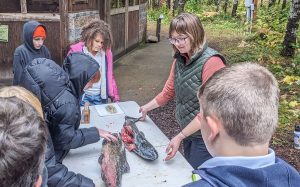
If the water was lower, the kids would have donned large rubber boots to walk into the river and kick up rocks in an effort to unearth the hidden bugs beneath.
“We’re basically teaching them about the salmon life cycle and how macros play a big role in that as being the food supply for salmon,” OSU student Kaylina Hernandez said, explaining that macroinvertebrates are “basically like a water bug.”
The team also shared how identifying macros in a river can reveal just how healthy or unhealthy the river is.
“So if there is one (macro) that’s incredibly sensitive to dirty water or something like that and they’re here, then that means this water’s probably clean,” Hernandez said.
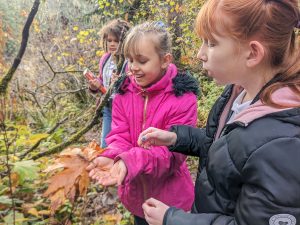
Instead of catching bugs, though, the kids played a game about identifying mushrooms and other area plants. They were also asked to make observations about the area surrounding them and given the opportunity to ask questions.
Some kids said they’d like to know things such as whether fish can live in the rainforest, how fish grow, how old they get, how they communicate, how the rocks got there, and how many atoms are in a fish.
Back at the salmon biology station, when asked if the kids knew how many species of salmon (in North American waters) there are, Kellen Landis was quickly able to provide the correct answer: five. He also raised his hand to answer several other questions about the species. When asked how he knew so much about salmon, he said he didn’t really know but he learns a lot on YouTube.
Konner Bandy, while using his finger to make designs in the sandy riverbank, said he learned there are different kinds of salmon and he learned about bugs during Salmon Watch.
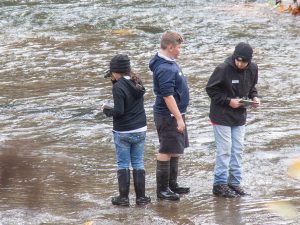
“I learned a lot of things,” he said. “I didn’t really learn a lot-lot, but it was a lot.”
Shoulders shared that they receive Chinook salmon from the Foster Fish Hatchery through a partnership with Oregon Department of Fish and Wildlife. Salmon Watch used to be entirely run by volunteers, but now can have a team of paid educators who come from different backgrounds and as university students.
“I’m having a really great time,” Konner said. “The (riparian walk) was awesome.”
Giving kids the opportunity to explore outside and learn about an important function in the Pacific Northwest – namely the salmon life cycle – Shoulders believes the field trip provides more to the kids than just basic education.
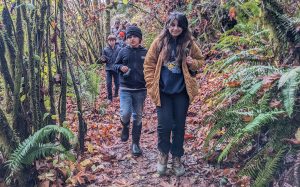
“It’s not just something in the river. It’s something people eat. It’s something people learn from. It’s something that was held sacred and is currently held sacred,” Shoulders said. “This field trip it’s – like salmon – multifaceted in the sense that it’s more than just information, it’s more than just getting in tune with the environment; but it’s also a place to practice respect.”

